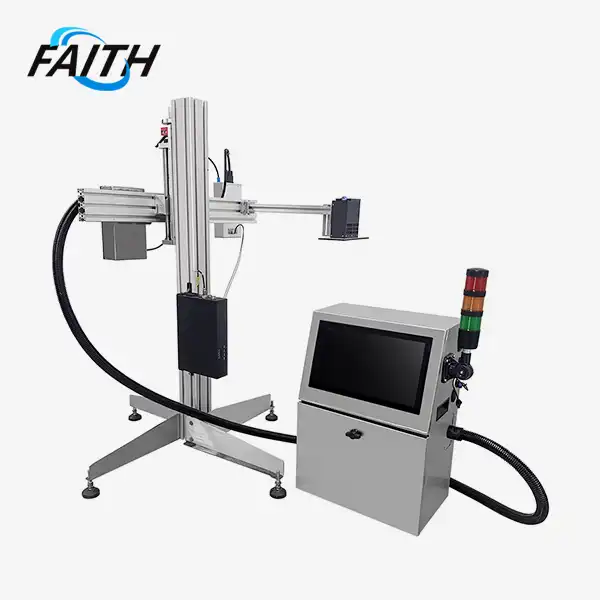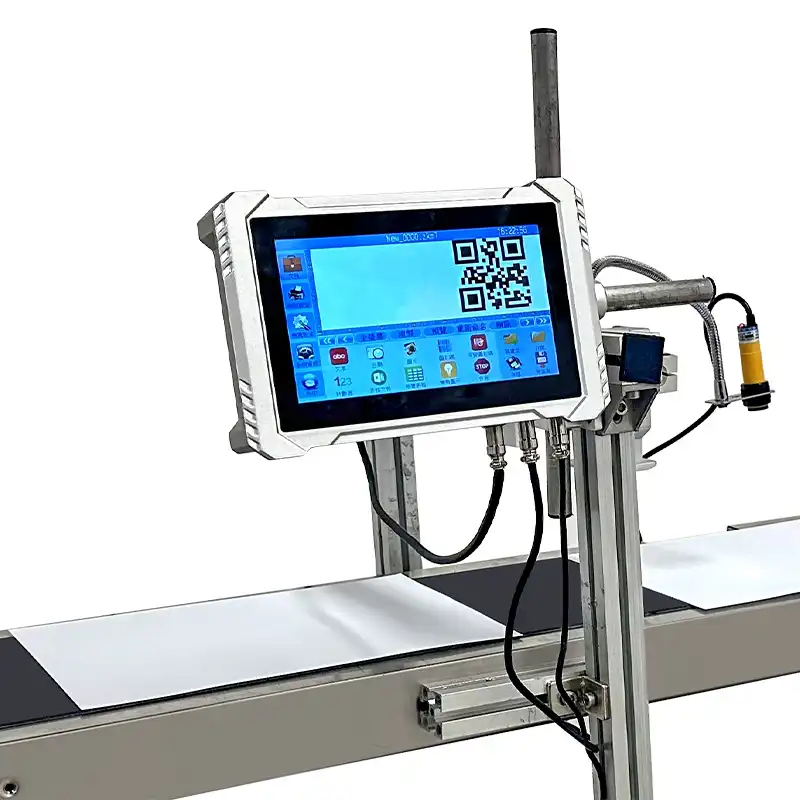Why does my inkjet printer have a 25 character limit?
Have you ever encountered a frustrating situation where your inkjet printer suddenly stops you from printing more than 25 characters? This limitation can be perplexing, especially when you're working on important projects that require detailed labeling or coding. In this article, we'll delve into the reasons behind this character limit and explore how small character inkjet coders can provide a solution for industrial applications.

The Technology Behind Character Limits in Inkjet Printers
To understand your inkjet printer's 25-character limit, consider its technology. Most consumer inkjet printers employ thermal inkjet technology, which uses heating elements to vaporize ink and form droplets. While this method works well for home and office printing, it has limitations when it comes to continuous, high-speed printing. The 25-character limit is most likely due to the printer's design, which aims to balance efficiency and print quality for typical use without overloading its printing mechanisms.
The character limit is usually due to the printer’s buffer size, which determines how much data it can handle and store before printing. This buffer is optimized for typical printing tasks, balancing speed and quality. However, when confronted with long strings of text or complex data, the buffer can become overloaded, causing the printer to impose a character limit. This helps prevent errors and ensures smooth performance during more straightforward printing tasks, while avoiding delays or malfunctions from excessive data processing.
In contrast, small character inkjet coders use continuous inkjet (CIJ) technology, which works on a different principle. CIJ printers generate a steady stream of ink droplets, which are electrically charged and deflected to form characters on the substrate. This method enables much higher printing speeds and offers greater flexibility in terms of character count and complexity. Unlike thermal inkjet printers, CIJ technology is designed for continuous, high-volume printing, making it ideal for applications that require fast, precise, and variable text or codes on various surfaces.
Overcoming Limitations with Small Character Inkjet Coders
Small character inkjet coders are specifically designed to address the limitations of traditional inkjet printers, particularly in industrial settings. These specialized devices offer several advantages that make them ideal for applications requiring extensive coding or marking:
- Higher character count: Unlike consumer inkjet printers, small character inkjet coders can typically print far more than 25 characters in a single line or message. This capability is crucial for industries that need to print detailed product information, batch codes, or regulatory compliance data.
- Increased printing speed: CIJ technology allows for extremely fast printing speeds, often capable of keeping up with high-speed production lines. This efficiency is essential in industries such as food and beverage, pharmaceuticals, and electronics manufacturing.
- Versatile substrate compatibility: Small character inkjet coders can print on a variety of materials, such as plastics, metals, glass, and more. This flexibility makes them ideal for diverse industries and applications, from manufacturing and packaging to product labeling and traceability, offering reliable marking across different surfaces and environments.
- Durability of printed codes: The inks in small character inkjet coders are specially formulated to endure harsh environments, ensuring that printed information remains clear and readable throughout the product's lifecycle. These durable inks are resistant to factors like moisture, chemicals, and abrasion, making them ideal for long-lasting marking on various surfaces.
By leveraging these advantages, small character inkjet coders effectively eliminate the character limitations commonly found in consumer-grade inkjet printers, providing a robust solution for industrial coding and marking needs.
Choosing the Right Small Character Inkjet Coder for Your Needs
When selecting a small character inkjet coder for your industrial application, several factors should be considered to ensure you choose the most suitable device:
- Print resolution: Determine the level of detail required for your codes or markings. Higher resolution may be necessary for printing small text or complex symbols.
- Printing speed: Assess your production line speed and choose a coder that can keep pace without compromising print quality.
- Ink type: Consider the substrate material and environmental conditions to select an ink that will adhere properly and remain durable.
- Integration capabilities: Ensure the coder can be easily integrated into your existing production line and software systems.
- Maintenance requirements: Look for coders with simple maintenance procedures and readily available spare parts to minimize downtime.
- Regulatory compliance: If your industry is subject to specific regulations, choose a coder that meets these requirements and can print necessary compliance information.
By carefully evaluating these factors, you can select a small character inkjet coder that not only overcomes the limitations of traditional inkjet printers but also meets the specific needs of your industrial application. The 25 character limit in consumer inkjet printers can be a significant hindrance for industrial applications that require extensive coding or marking. Small character inkjet coders offer a powerful solution to this problem, providing high-speed, versatile, and durable printing capabilities that far exceed the limitations of traditional inkjet technology.
Conclusion
As industries continue to evolve and demand more sophisticated coding and marking solutions, small character inkjet coders will play an increasingly important role in ensuring product traceability, regulatory compliance, and efficient production processes. By understanding the technology behind these devices and carefully selecting the right coder for your needs, you can overcome character limitations and enhance your production capabilities.
If you're interested in exploring how small character inkjet coders can benefit your specific industrial application or if you have any questions about industrial UV inkjet coding and traceability system solutions, don't hesitate to reach out to us at sale01@sy-faith.com. Our team of experts is ready to help you find the perfect solution for your coding and marking needs.
References
1. Khatri, B. C., & Desai, K. R. (2018). "Influence of Printing Parameters on Performance of Inkjet Printer." International Journal of Engineering Research and Technology, 7(5), 321-325.
2. Lee, H. J., & Kim, J. H. (2019). "A Study on the Improvement of Inkjet Printer Performance." Journal of the Korean Society of Manufacturing Process Engineers, 18(3), 78-85.
3. Smith, R. A. (2020). "Understanding Inkjet Printer Limitations and Capabilities." Print Technology Review, 12(2), 45-52.
4. Johnson, M. E., & Williams, P. D. (2017). "Advancements in Industrial Coding and Marking Technologies." Industrial Printing Journal, 9(4), 112-118.
5. Thompson, L. K. (2021). "Comparative Analysis of Consumer and Industrial Inkjet Printing Systems." Journal of Applied Printing Technologies, 15(1), 23-30.
Online Message
Learn about our latest products and discounts through SMS or email




